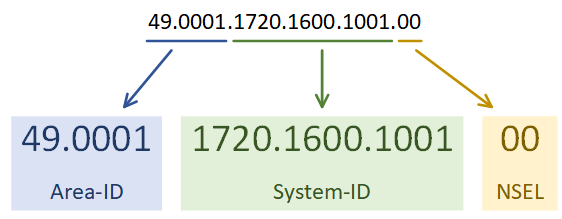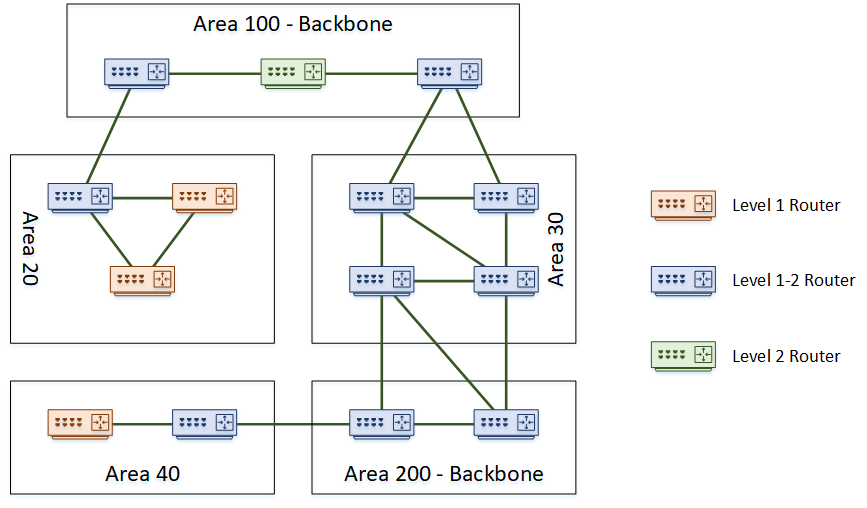Adjacancies
IS-IS uses Protocol Data Units, or PDU’s to communicate. This is like a packet in OSPF terminology.
An IS-IS Hello PDU, or IIH, is like OSPF hello packets. Routers exchange IIH’s to form neighbour relationships, and share area addresses.
IS-IS sends IIH PDU’s at layer-2, using a multicast MAC address. This is why there is only a need for a single address (the NET or NSAP) per router. Addresses aren’t required per interface. This also shows that IP addresses on interfaces are irrelevant to IS-IS.
Level 1 routers need the Area-ID to match. Additionally, level 2 routers will ignore IIH’s from Level 1 routers. Authentication and network type must also match for neighbours to form.
Level 2 and Level 1-2 routers do not need level 2 IIH’s to have the same Area-ID
A Link State PDU, or LSP, contains routing information, and is flooded to neighbours. LSP’s are like OSPF’s LSA’s. There are two types of LSP’s; Level 1 LSP’s and Level 2 LSP’s. Level 1-2 routers send and receive both types.
The LSP contains a header and TLV fields. The TLV fields contain the information that is being advertised, such as IP routes. Extra TLV’s contain other data, like neighbour information, and authentication information.
When there are network changes, the router floods LSP’s out. Other routers receive these LSPs, and used them to build their Link State Database (LSDB). IS-IS is more efficient at this than OSPF. It combines several networks into an LSP, rather than sending many small LSA’s. This adds to the scalability of IS-IS, as more routers can exist on the network without over flooding.
 When IS-IS is on broadcast media, one router is the Designated Intermediate System, or DIS. The DIS will flood LSP’s out, instead of having all routers flood the segment. This is like the Designated Router in OSPF.
When IS-IS is on broadcast media, one router is the Designated Intermediate System, or DIS. The DIS will flood LSP’s out, instead of having all routers flood the segment. This is like the Designated Router in OSPF.Routers hold an election to select the DIS. The router with the highest priority on the segment wins the election and becomes the DIS. If there is a tie, the router with the highest MAC wins. DIS uses preemption, so if a router with a better priority comes along, it will become the new DIS.
There is no backup DIS. This is different to OSPF, which has a BDR role.


